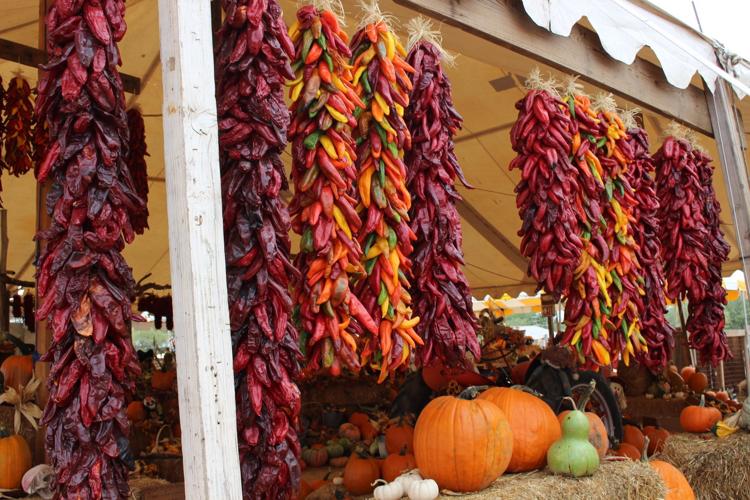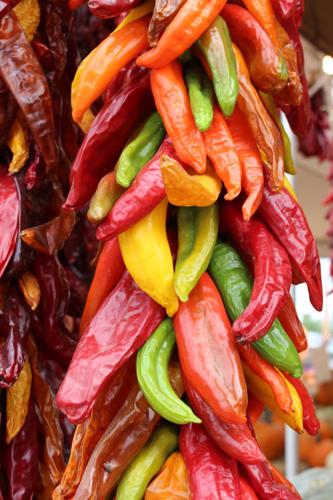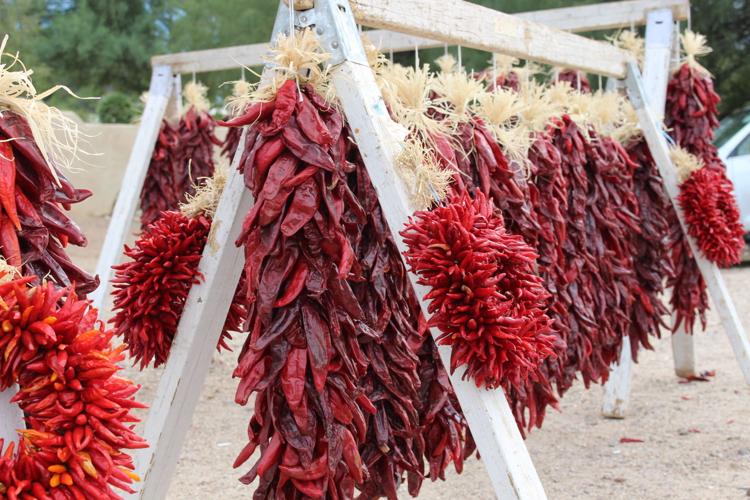Green chiles have turned red and strings of the chiles are available around Tucson.
Hanging chile strings is supposed to bring good health and good luck. Or you can cook with the chiles.
Last week, we asked readers for suggestions on where to find ristras. Several responded and several readers posed questions about the autumnal tradition.
What is in a name?
One reader noted, “Until recent years I had never heard the word ‘ristra’ in Tucson, only in New Mexico. Throughout my life in Tucson these strings of chiles were called ‘sartas.’” She asks that we sort out the difference.
The words “ristra” and “sarta” both mean “string” and both “ristra de chiles” or “sarta de chiles” are perfectly proper.
They are interchangeable, said Dolores Durán-Cerda, who was a longtime Spanish instructor at Pima Community College who teaches Spanish at the University of Arizona.
In Durán-Cerda’s mother’s family from the Douglas area, her mother used “ristras” while her uncle, “sartas.” Same immediate family, different word choice.
“Sartas” seems to be more common in some Sonora spots, like Ciudad Obregón, but “ristras” percolates through Hermosillo.
Durán-Cerda said she’s heard “sartas” used most often in Tucson. In New Mexico, of course, “ristras” rule.
What you call a chile string seems to be a matter of regional differences and personal preference.
As the reader told us: “My sarta by the front door always will be that!”
Picking a ristra
Another reader had several questions about freshness, quality and how to choose a ristra.
We sought advice from Gary F. Maricle, one of the owners of New Mexico Chili, a company that offers a large complement of chile products in Hatch, New Mexico. Some of Maricle’s tips:
- Before you pick a ristra, decide whether you want to cook with the chiles or if you want to decorate. If you plan to cook with the chiles, pick a string with pods that are firm, free of mold and smell fresh.
- The chiles that are strung are not the choice chiles — they are the leftovers that were not shipped or used for other products. There will not be any control over the temperature of the chiles on the string — you can’t choose mild, medium, hot or very hot.
- Hang the string in the kitchen and pay attention to the chile pods because you don’t want insects to make their home in the chiles.
- Always cook any foods with the chiles to 165 degrees to kill contaminants.
- For decorative pieces that are hung outside, let chiles dry and then seal them with lacquer or sealants available at area craft stores. The decorative chiles can develop mold if they are not sealed and insects can enter and lay their eggs in the pods. Sealing the chiles will also help keep birds from nibbling the ristra.
Edgar Castillo, owner of the Happy Saguaro in Oro Valley, said his shop will lacquer the ristras for customers. A ristra can last up to three years when lacquered properly, he said.
If you are buying for a friend or relative who doesn’t live in a dry area like Tucson or Hatch, treat the ristra with lacquer or sealant before it is shipped.
- As the vibrant red ristras dry, they become darker.
- Expect to pay $1.50 to $2 per inch of a chile string. We found 1-foot strings in Tucson for $12 to $15.
- Some folks like ristras drier with deep, rustic tones, others like them fresh and heavy.
Ristras should be available in Tucson until Christmas or the end of the year.









